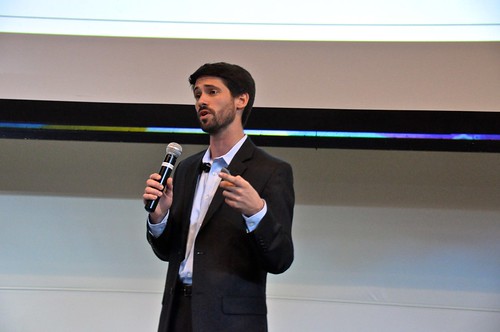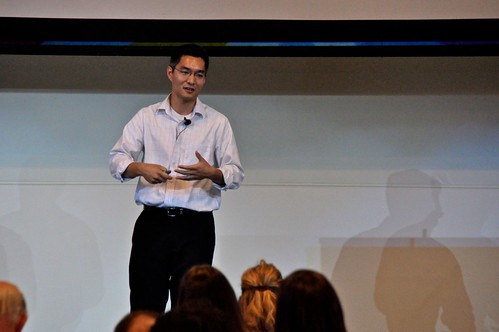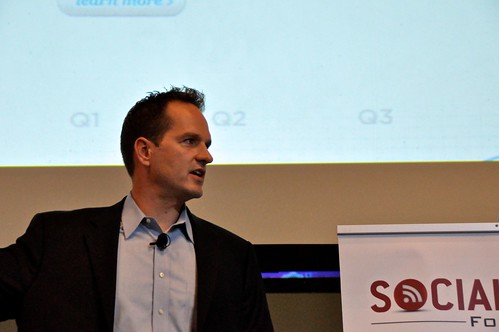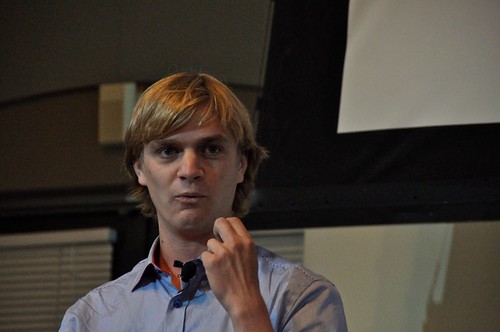Yesterday was the fourth Social Media for Nonprofits conference, and the first one in Los Angeles. A packed room of nonprofits and individual activists gathered to learn best practices. Earlier today, we posted a blog on the first half sessions. This second blog post focuses on the final four sessions which had a heavy focus on fundraising.
Matt Mahan, Vice President of Social Impact, Causes
Causes is a consumer-facing 30-person tech company in San Francisco that focuses on individual empowerment. The company focuses on the individual change agent. Causes seeks to create a culture of giving by doing Philanthropy. All of these things should level the playing field for nonprofits, regardless of size. Matt suggested five tips:
Tip 1: Cultivate Community–Communications needs to move from a list approach to a community method, and you have to become horizontal, says Mahan. You need to support interaction between your supporters. Unique content between supports is what is needed.
Tip 2: Be Donor-Centric–Make sure you allow your effort to revolve around the donor. They are the ones who give and make the organization go.
Tip 3: Run a Campaign–Structure a strong effort that will launch, run a time period, will do well, and celebrates the donors. Define specific actions, and set goals and timeless to achieve success. Reward advocates, too!
Tip 4: Cross-Channel Promotion–Let supporters self-select the channel. Repetition works, and build a critical mass of action takers.
Tip 5: Close the Loop–Provide immediate feedback. Thank them, define your success. Also, provide post campaign updates.
Brian Fujito, CTO and Acting CEO of Mightycause
Our own Brian Fujito began with a story about his children, and how he was teaching them to treat donors like investors. He made an impassioned plea for the sector to consider infusing more love into relationships and to better donor engagement methods.
This begins by understanding what donors want. Brian cited the Millennial Donors Survey and the importance of having friends ask as a primary recommendation, reporting back to the donors, and then finally getting nonprofit leadership involved in the process.
Brian discussed some of the best practices associated with social online fundraising, including storytelling, having fun, using photos and videos, and encouraging the use of milestones to keep investors excited. He then did a deep dive on the types of requests needed, including customized communications for each social network, and the need for specific asks.
To close, Brian delved into the investor relationship. He encouraged reporting back, giving shout-outs, sending personal thank yous, long term reporting tips, and finally, providing access to executives through social media.
Dave Boyce, CEO of Fundly
Fundly CEO David Boyce starts off by asking nonprofits if they are clear about what they want on their page. Are donations, volunteering, and sharing the one-click action on their sites? The Custodial Abuse website was highlighted as a great example. So was charity: water because of its clear calls to action.
Engagement is a two-way reciprocal contract where each party gives and receives over time. It’s the principal of reciprocity. “What can nonprofits give that makes donors want to engage and reciprocate?” Boyce asked. This is the critical question of his presentation.
“Supporters are interested in what we are doing,” Boyce says. “We can share information about what we are doing and how their donations can make a difference.” As they support the organization on a deeper level, you provide more information. Examples include Houston Ballet, charity: water, and the World Food Organization in Tanzania.
The counterintuitive part is to make your ask significant. That is what engages people. Happy people give more, and giving makes people happier. This dates back to Aristotle; this is an ancient truism.
Make the reciprocating give meaningful. Make it real, be connected. Be significant and clear. “Clear means short,” said Boyce. People can’t understand a long story without context.
Joel Bartlett, Director of Marketing, PETA
Joel Bartlett at PETA noted email support is down, and that their people are increasingly busy. They aren’t as able to engage. To keep people engaged, PETA has turned to mobile platforms.
In April, they launched an iPhone app that has inspired 280,000 actions. That’s an average of 20 actions per user.
From there, PETA moved to texting. PETA sees a 98% read rate with mobile. The organization garners new text list members through its web site. PETA mentions victories through text messages, as well as polls people through the platform. The organization celebrated Rise of the Planet of the Apes use of CGI apes, and encouraged user attendance.
Mobile advocacy is a fantastic result for PETA. They get a 25% result via text versus 3% email. Texting is more sensitive than email, and you need to be more mindful, but young people mind texting a lot less than older users.
Part I of the Social Media for Nonprofits Conference: LA notes can be accessed here.




